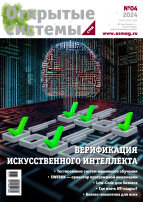_300.jpg)
COVER FEATURES
MICROSERVICES
Microservices
Microservices are gaining momentum across industries to facilitate agile delivery mechanisms for service-oriented architecture and to migrate function-oriented legacy architectures toward highly flexible service orientation. IDC has forecasted that by 2021, 80% of application development on cloud platforms will be with microservices. The article presents a brief overview of microservice technologies and how to migrate to them.
Xabier Larrucea (xabier.larrucea@tecnalia.com), Izaskun Santamaria (izaskun.santamaria@tecnalia.com), senior project leaders, Tecnalia; Ricardo Colomo-Palacios (ricardo.colomo-palacios@hiof.no), professor, Ostfold University College; Christof Ebert (christof.ebert@vector.com), managing director, Vector Consulting Services.
Migrating Enterprise Legacy Source Code to Microservices
Modernization of legacy enterprise systems is a challenge faced by many organizations that want to exploit the new cloud-computing technologies to meet high-scalability and high-availability needs. Assuming that a legacy system’s source code is available and maintainable, microservices are a promising solution in which centralized services are reimplemented as multiple independent services.
Andrei Furda (andreifurda@gmail.com), lecturer, Colin Fidge (c.fdge@qut.edu.au), professor, Wayne Kelly (w.kelly@qut.edu.au), senior lecturer, Alistair Barros (alistair.barros@qut.edu.au), professor, Queensland University of Technology; Olaf Zimmerman, professor, University of Applied Sciences of Eastern Switzerland, Rapperswil.
Microservices. The Journey So Far and Challenges Ahead
Microservices are the latest trend in software service design, development, and delivery. They constitute an approach to software and systems architecture that builds on the well-established concept of modularization but emphasizes technical boundaries. This increases software agility because each microservice becomes an independent unit of development, deployment, operations, versioning, and scaling.
Pooyan Jamshidi (pjamshid@cs.cmu.edu), postdoctoral research associate, Carnegie Mellon University; James Lewis (jalewis@thoughtworks.com), principal consultant, ThoughtWorks; Claus Pahl (cpahl@unibz.it), associate professor, Free University of Bozen-Bolzano; Nabor C. Mendonca (nabor@unifor.br), professor, University of Fortaleza; Stefan Tilkov (stefan.tilkov@innoq.com), cofounder, principal consultant, INNOQ.
MACHINE LEARNING
Machine Learning is Manufacturing Industry’s Success Recipe
With industrial machine learning initiatives’ success depending on many factors, accounting for them would enable to achieve optimal resource distribution while ruling out economically unfeasible projects at early stages.
Olga Plosskaya (plosskaya@visiology.com), Data Analytics Department Project Manager, Visiology (Moscow).
Using Semantic Analysis When Readying Training Samples
Efficient use of machine learning technologies for text processing is impossible without preliminary semantic analysis tools that should always be employed when readying and tagging the training samples.
Maksim Kovalyov (kovalev@iqsystems.ru), CEO, IQSystems (Moscow).
SEMANTIC TECHNOLOGY
Data Management Based on Knowledge Graphs
Businesses able to manage the complexity of their IT systems using knowledge graphs will gain advantages in the digital economy era.
Evgeny Khlyzov (eugene.hlyzov@datafabric.cc), CTO, DataFabric (St. Petersburg).
DIGITAL TRANSFORMATION
The best automation cycle
These days, traditional automation approaches are unable to achieve strategic effect anymore, with processes automated on an “as-is” basis creating “digital chaos” that complicates operations rather than streamlines them. A project completed by Iskra R&D and manufacturing group has proven that digital transformation initiatives require brand new automation principles.
Sergei Sobolev (ssi018@iskra.perm.ru), Deputy ICT Director, Iskra (Perm).
BLOCKCHAIN TECHNOLOGY
Top Ten Obstacles along Distributed Ledgers’ Path to Adoption
The article presents the top ten obstacles toward the adoption of distributed ledgers, ranging from identifying the right ledger to use for the right use case to developing scalable consensus protocols that provide meaningful notion of public verifiability.
Sarah Meiklejohn (s.meiklejohn@ucl.ac.uk), reader, University College London.
DBMS
Hierarchical bitmap indexes
Hierarchical bitmap indexes were introduced into database science about 15 years ago. They build upon the concept of conventional bitmap indexes, a well-known feature of major database systems that is widely used in database applications. The article outlines proven scenarios of using HBI for query optimization, described in literature. Efficiencies that HBI drives in real-world solutions are also shown.
Ilia Trub (itrub@yandex.ru), Lead Software Engineer, Samsung R&D Center (Moscow).
OS ACADEMY
I Want to Learn Digitization
Automation only streamlines business, while true digital transformation enables entirely new business processes, services, business models, facilitating the creation of new business types, market segments, or even industries. For that to come true, however, talent is needed capable of inventing new things digital.
Irina Sheyan (rrisha@osp.ru), Scientific Editor, CIO Magazine Russia (Moscow).
WORLD
Olga Kramer: From Computer Operator to Software Developer
Various computing centers that participated in USSR’s nuclear project employed a lot of women. One of them was Olga Kramer, a programmer that worked on early computers, who came a challenging way to become a prominent expert in applied math and software development.
Irina Kraineva (cora@iis.nsk.su), researcher, A.P. Ershov Institute of Informatics Systems (Novosibirsk).
Is Tsetlin Machine a Competitor of Nerual Networks?
A Norse researcher has proposed a new machine learning approach based on works of a USSR scientist whose theoretical studies were half a century ahead of his time.
Leonid Chernyak (lc1244@gmail.com), freelancer (Moscow).
LIBRARY
IT is Getting Smarter: From Self-Learning “Things” to Mobile Smoking Cessation Coaches
The May-August issues of Computer (IEEE Computer Society, V.51, No. 5-8, 2018) cover machine learning for resource-constrained systems, new Web Science studies, digital trust issues in the IoT era, and mobile health coaching.
Alexander Tyrenko (shoorah@osp.ru), reviewer, Computerworld Russia (Moscow).
